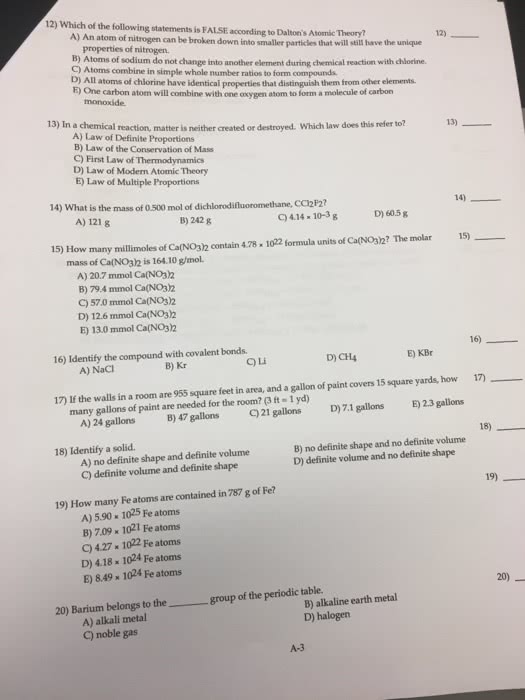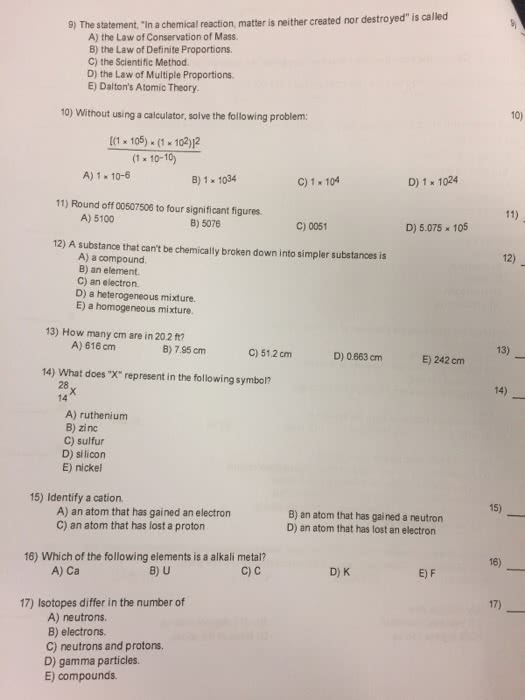01:160:159 Lecture 2: chap02notes

AP Chemistry
A. Allan Chapter 2 Notes - Atoms, Molecules and Ions
2.1 The Early History
Refer to the Chemistry History Timeline for this chapter
2.2 Fundamental Chemical Laws
A. Law of Conservation of Mass
1. "Mass is neither created nor destroyed"
2. Translation: In ordinary chemical reactions, the total mass of
the reactants is equal to the total mass of the products
B. Law of Definite Proportion
1. "A given compound always contains the same proportions of
elements by mass"
2. Translation: Compounds have an unchanging chemical formula
C. Law of Multiple Proportions
1. "When two elements form a series of compounds, the ratios of the
masses of the second element that combine with one gram of the first
element can always be reduced to small whole numbers
2. Translation: Sometimes two elements can come together in more than
one way, forming compounds with similar, though not identical
formulas
2.3 Dalton's Atomic Theory
A. Atomic Theory
1. Each element is made up of tiny particles called atoms
2. The atoms of a given element are identical
3. Chemical compounds are formed when atoms combine with each
other. A given compound always has the same relative numbers
and types of atoms
4. Chemical reactions involve reorganizations of the atoms. The atoms
themselves are not changed in a chemical reaction
B. Avogadro's Hypothesis
1. At the same conditions of temperature and pressure, equal volumes of
different gases contain the same number of particles.
2.4 Early Experiments to Characterize the Atom
A. J.J. Thomson and the Electron
1. Determined the charge to mass ratio of the electron
2. Reasoned that all atoms must contain electrons
3. Reasoned that all atoms must contain positive charges
B. Robert Millikan and the Oil Drop
1. Oil drop experiments determined the charge on an electron
2. With charge information, and Thomson's charge/mass ratio, he
determined the mass of an electron (9.11 x 10-31 kg)
Document Summary
Chapter 2 notes - atoms, molecules and ions. Refer to the chemistry history timeline for this chapter. 2. 3 dalton"s atomic theory: atomic theory, each element is made up of tiny particles called atoms, the atoms of a given element are identical, chemical compounds are formed when atoms combine with each other. A given compound always has the same relative numbers and types of atoms: chemical reactions involve reorganizations of the atoms. The atoms themselves are not changed in a chemical reaction: avogadro"s hypothesis, at the same conditions of temperature and pressure, equal volumes of different gases contain the same number of particles. Element 109 = un (1) nil(0) enn(9) ium = unnilennium bi = 2 sept = 7 un = 1 hex = 6 tri = 3 oct = 8 quad = 4 enn = 9. 2. 8 naming simple compounds: ionic compounds, positive ion is always named first, negative ion second.




